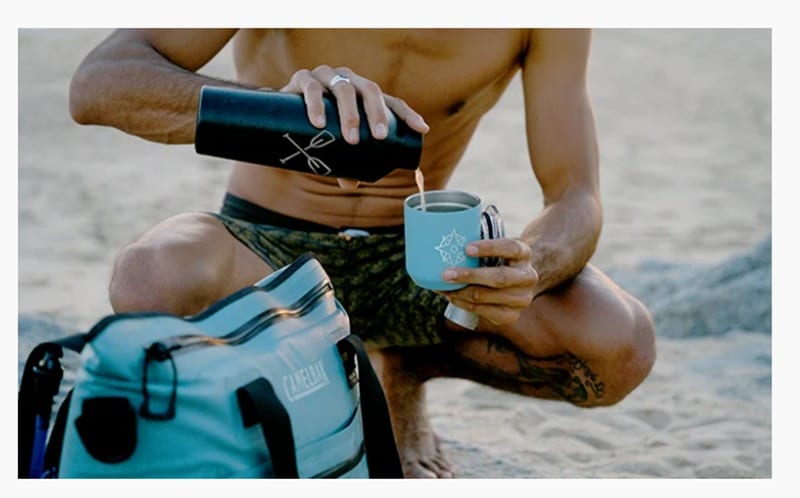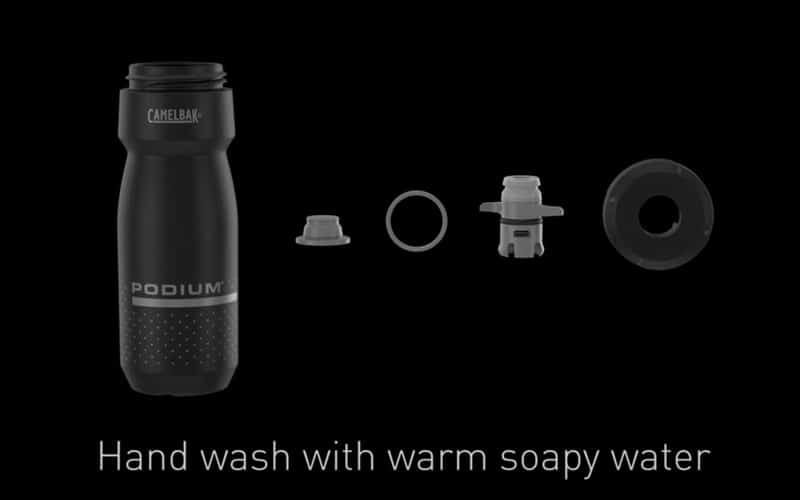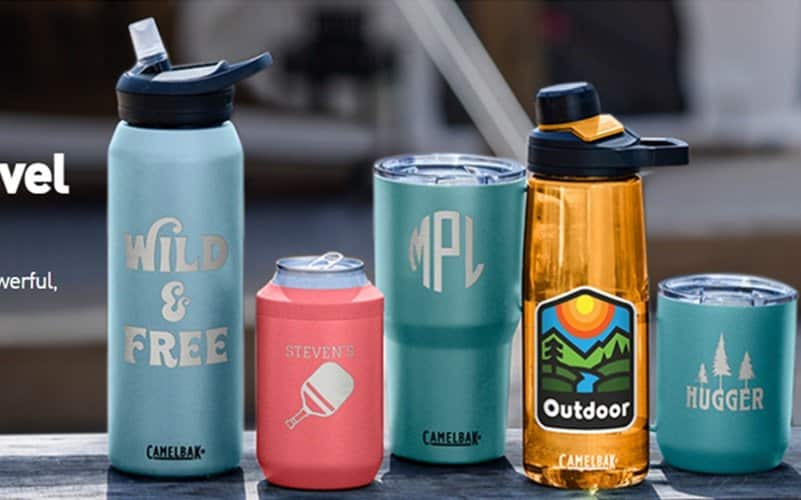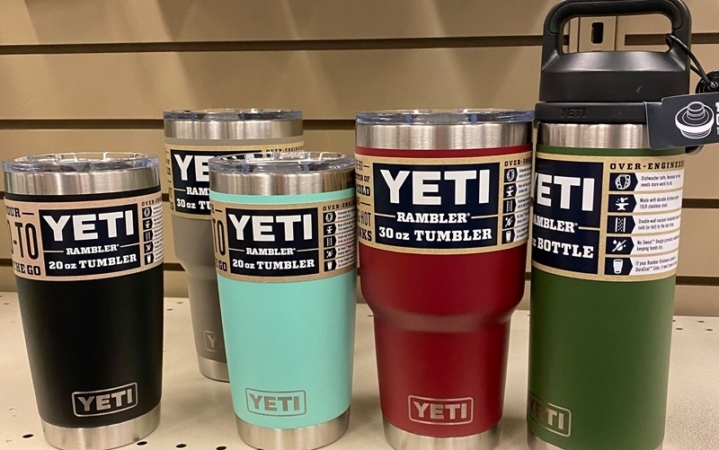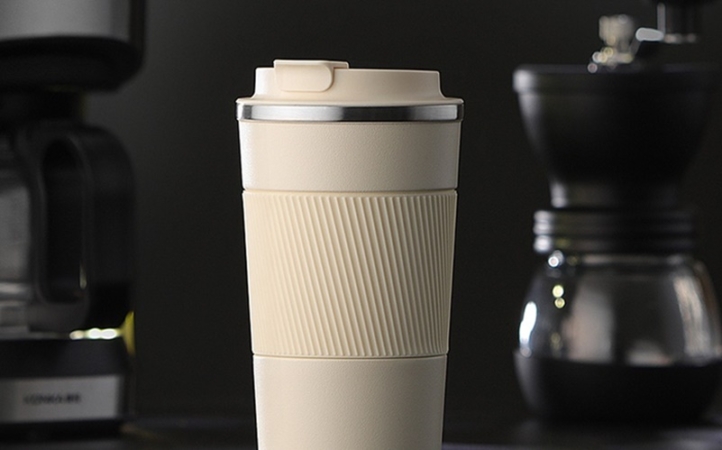How to Use Camelbak Water Bottle? Details Guide
Last Updated on March 11, 2024 by Tina ShaoStarting with a new hydration tool, especially one as innovative as a CamelBak bottle, can be exciting and overwhelming. However, with a few simple steps, you can ensure your bottle is ready to accompany you on your hydration journey.
Step 1: Initial Setup: Rinsing Off the Bite Valve
Rinsing the Bite Valve:
- Giving the bite valve a good rinse is essential before using your CamelBak bottle for the first time. This ensures any manufacturing residues are washed away.
- To do this, remove the bite valve and straw from the cap. Rinse them under running water, ensuring water flows through all parts. Shake off excess water and let them air dry.
Step 2: Filling the Bottle
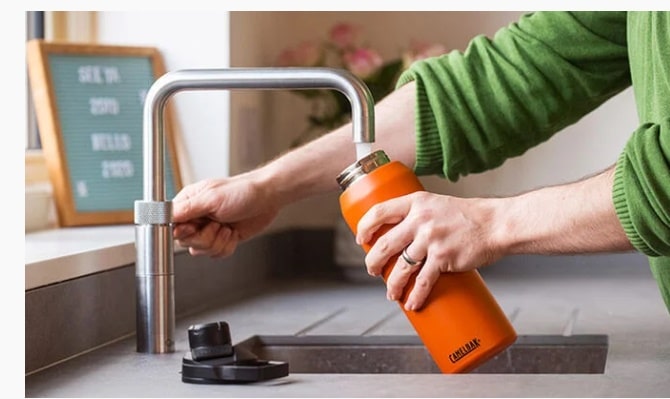
Filling Process:
- Open the cap of the bottle.
- If your bottle has a wide mouth, filling it directly from a tap or a water dispenser is easy. You might want to use a funnel or a jug for spill-free bottle filling with a narrow opening.
- Ensure you don’t overfill. Leave a little space at the top to avoid spills when sealing the cap.
Beverage Recommendations:
CamelBak bottles are primarily designed for water. However, they can also accommodate a range of beverages.
- Cold beverages: You can fill your bottle with cold drinks, especially in insulated bottles designed to keep beverages cold for extended periods.
- Electrolyte drinks: If you’re into sports or physical activities, electrolyte drinks can be stored in CamelBak bottles. However, ensure you clean the bottle thoroughly after each use to prevent residue buildup.
- Avoid hot beverages: Unless specified (like in the Hot Cap model), avoid filling your standard CamelBak bottle with hot liquids, as they can damage the bottle and affect its longevity.
- Avoid alcoholic or sugary drinks: These can leave residues and affect subsequent fills’ taste. If you do use them, ensure a thorough cleaning afterward.
Getting started with your CamelBak bottle is a straightforward process. By understanding its unique features and following recommended practices, you can enjoy a seamless and refreshing hydration experience.
Step 3: Using the Bite Valve
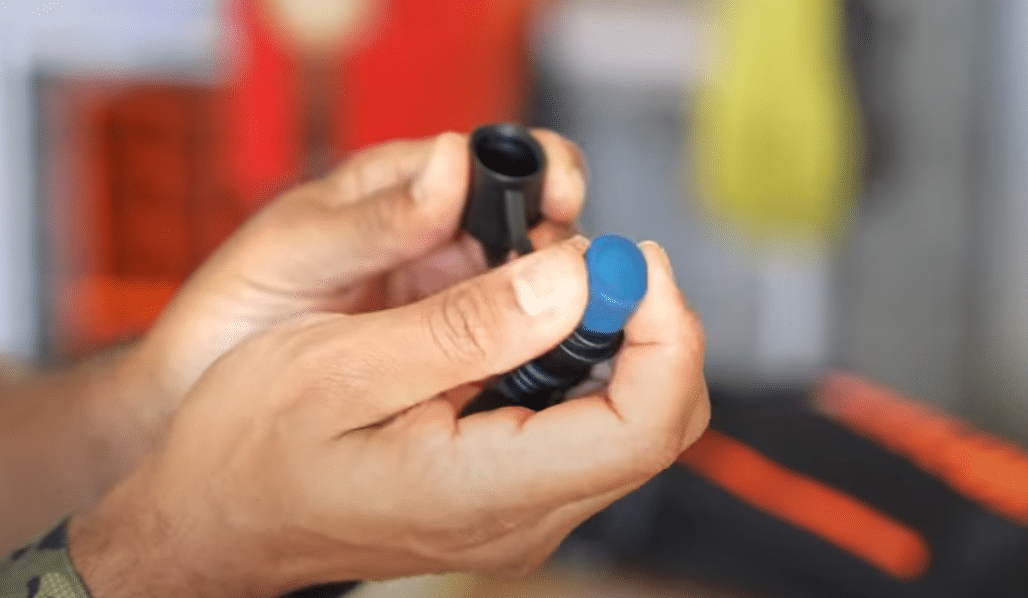
CamelBak’s bite valve is a hallmark of its innovation in the hydration industry. It offers a spill-proof solution while ensuring a smooth flow of water. Here’s a deep dive into how to use and understand this unique feature.
The bite valve is crafted from a soft, pliable silicone designed to open up when pressure is applied and seal shut when released. This mechanism works as follows:
- Biting: When you bite down on the valve, the pressure causes the silicone to flex and open, allowing water to flow through.
- Releasing: Once you stop biting, the silicone’s natural elasticity causes it to return to its original shape, sealing and preventing leaks.
This self-sealing mechanism ensures you get water only when you want, without accidental spills or drips.
Tips for First-Time Users to Use the Bite Value
If you’re new to CamelBak bottles, the bite valve might feel slightly different from traditional water bottle spouts. Here are some tips to get you started:
- Squeezing the Bite Valve: Give the bite valve a gentle squeeze before your first sip. This primes the valve and ensures a smoother flow when you start drinking.
- Rolling Between Fingertips: If the bite valve initially feels stiff, gently roll it between your fingertips. This action helps to loosen the silicone, making it more responsive when you bite down.
- Biting Technique: You don’t need to bite down hard. A gentle bite is enough to open the valve. With time, you’ll find the perfect pressure that works for you.
- Positioning: Ensure the bite valve is oriented correctly. The pointed end should be facing upwards. This ensures optimal flow and reduces the chances of air being sucked in.
- Cleaning: After each use, especially if you’re drinking beverages other than water, it’s a good idea to rinse the bite valve. This prevents any residue buildup and ensures a fresh taste with every sip.
While the bite valve might seem unconventional at first, its benefits in terms of spill-proof hydration are unparalleled. With some practice and understanding, you’ll soon find it an intuitive and efficient way to stay hydrated.
Step 4: Maintenance and Care
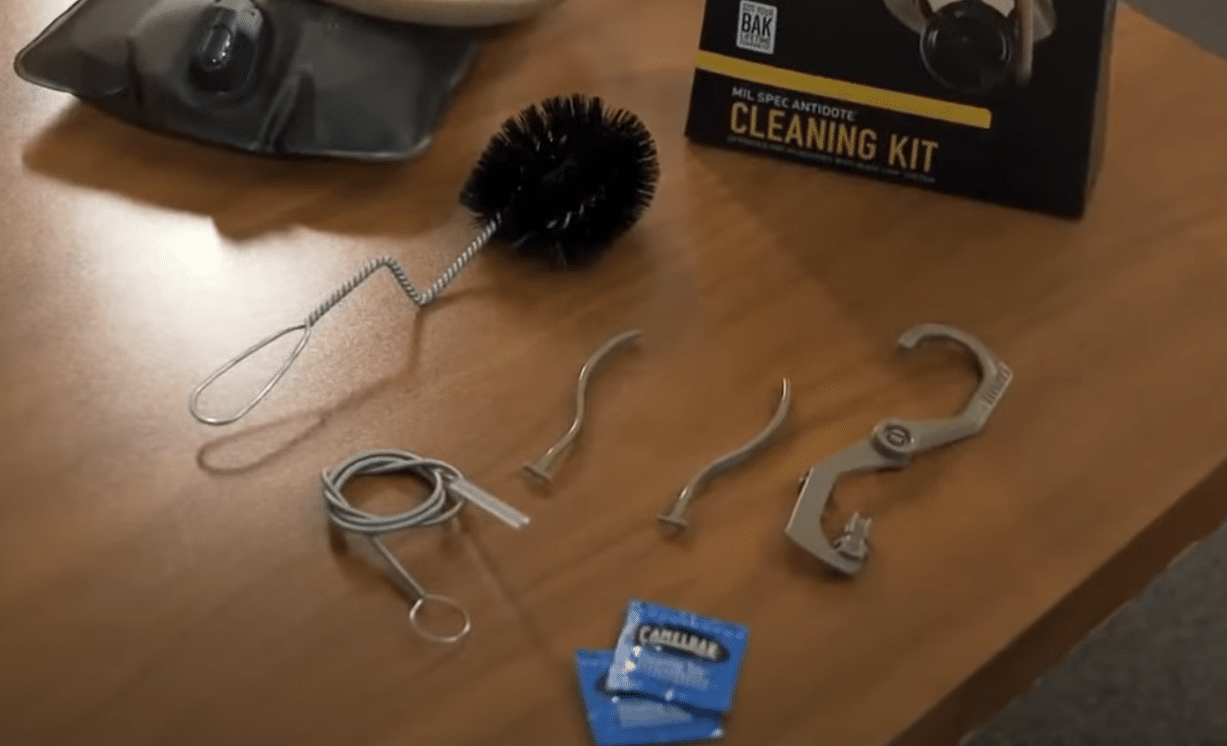
CamelBak bottles, with their innovative designs and features, are built to last. However, like all frequently used items, they require regular maintenance and care to ensure they function optimally and remain safe for consumption. Here’s a comprehensive guide on how to care for your CamelBak bottle.
Cleaning Recommendations
- Frequency: It’s advisable to clean your CamelBak bottle after every use, especially if you’ve filled it with beverages other than water. This prevents residue buildup and bacterial growth.
- Dismantling: For a thorough clean, dismantle the bottle. Remove the cap, bite valve, and straw (if applicable).
- Soapy Water: Use warm, soapy water to clean the bottle and its components. A bottle brush can be handy for reaching the inner corners of the bottle.
- Rinse: Ensure you thoroughly rinse the bottle and its parts to remove soap residues.
- Air Dry: Allow the bottle and its components to air dry completely before reassembling. This prevents moisture buildup, which can lead to mold growth.
Addressing Common Issues
- Leaky Bottles: If your bottle leaks, check the bite valve and cap for any visible damage. Ensure the cap is screwed on correctly. If the bite valve is worn out, consider replacing it.
- Cloudy Surface: A cloudy appearance can result from mineral deposits, especially if you fill your bottle with hard water sources. A rinse with white vinegar and water can help restore clarity.
- Smeared Designs: Avoid using abrasive scrubbers if your bottle has printed designs. Gently hand wash the exterior to prevent the designs from smearing or fading.
Recommendations Against Microwaving the Bottle
While CamelBak bottles are durable, they are not designed to withstand the intense heat of a microwave. Microwaving can warp the plastic, damage the bottle’s integrity, and even cause harmful chemicals to leach into the water. Always avoid microwaving your CamelBak bottle.
Freezing Guidelines
- Partial Fill: Don’t fill your bottle to the brim if you plan to freeze your bottle. Water expands when frozen, and overfilling can cause the bottle to crack.
- Orientation: Store the bottle upright in the freezer to prevent leaks as the water expands.
- Thawing: Allow the bottle to thaw naturally at room temperature. Avoid hot water or external heat sources, as sudden temperature changes can damage the bottle.
With regular maintenance and care, your CamelBak bottle can remain a reliable hydration companion for years. By addressing common issues promptly and following recommended cleaning practices, you ensure the longevity and safety of your bottle.
Using CamelBak in Different Environments
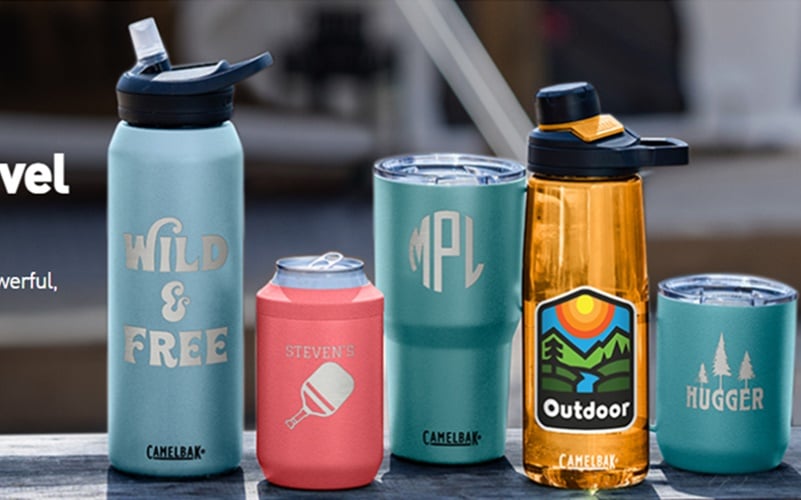
CamelBak bottles are versatile and designed to accompany you in various environments and situations. However, each environment presents its own set of challenges. Here’s a guide on how to use your CamelBak bottle in different scenarios, ensuring optimal performance and longevity.
Air Travel: Precautions to Take When Flying with a CamelBak Bottle
- Empty Before Security: Due to liquid restrictions at airport security checkpoints, ensure your CamelBak bottle is empty before you reach the security line.
- Compact Storage: If you’re short on space, remove the bite valve and straw (if applicable) and store them separately to make the bottle more compact.
- Pressure Changes: Changes in cabin pressure can cause the bottle to leak if filled. To prevent this, ensure the bottle is either full or empty. A half-filled bottle is more likely to leak due to air expansion.
- Hydration Onboard: Air travel can be dehydrating. Once you’ve passed security, you can refill your CamelBak bottle at water refill stations available in many airports. This ensures you stay hydrated during your flight.
Cold Weather: Tips to Prevent Water from Freezing in the Bottle
- Insulated Models: If you’re venturing into extremely cold environments, consider using an insulated CamelBak model. These bottles are designed to keep beverages cold but can prevent water from freezing longer than non-insulated models.
- Keep Close to Body: Store the CamelBak bottle close to your body when hiking or skiing. Your body heat can prevent the water from freezing.
- Warm Beverages: Consider filling your bottle with warm (not boiling) water. This gives the water a higher starting temperature, delaying the freezing process.
- Avoid Leaving Out: If camping overnight in cold conditions, avoid leaving your CamelBak bottle outside. Instead, keep it inside your sleeping bag or tent to prevent freezing.
Hot Beverages: Recommendations and Precautions
- Check Compatibility: Not all CamelBak bottles are designed for hot beverages. Ensure your model is suitable for hot liquids before filling.
- Avoid Boiling Liquids: If your bottle is designed for hot beverages, avoid filling it with boiling liquids. Extremely hot liquids can damage the bottle’s interior and the bite valve.
- Use with Caution: Remember that the bottle’s exterior might become hot when filled with a hot beverage. Handle with care to avoid burns.
- Insulated Models for Longer Warmth: If you want your beverage to stay hot for extended periods, consider using an insulated CamelBak model. These bottles are designed to retain temperature, keeping your drink hot for hours.
While CamelBak bottles are designed for versatility, understanding the nuances of different environments ensures you get the best out of your bottle.
Whether flying across continents, hiking in freezing conditions, or just sipping a hot beverage, these guidelines ensure your CamelBak bottle serves you well.
Conclusion
While CamelBak bottles are designed for durability, their longevity and performance are enhanced when users follow the recommended care guidelines. Regular cleaning, understanding the unique features, and using the bottle as intended to ensure that it remains a reliable hydration tool for years.
Users can enjoy the myriad benefits they offer by understanding and appreciating the nuances of these bottles and following the care guidelines. Thanks to CamelBak, here’s to staying hydrated in style and confidence!


